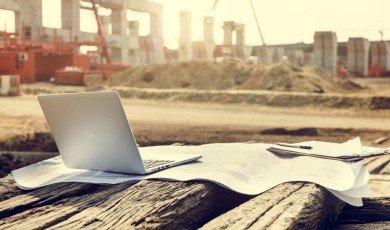
The construction industry in 2025 is at the forefront of transformation, driven by technological innovation, sustainability imperatives, and evolving global demands. As the world grapples with urbanization, climate change, and economic shifts, construction trends are shaping a future where buildings are smarter, greener, and more resilient. From advanced materials to digital tools, the industry is redefining how we build, with implications for economies, communities, and the environment. This article explores the key trends driving construction in 2025, their impact on the industry, and the role of communication in a globalized market, with a nod to services like Polilingua that facilitate cross-cultural collaboration.
The Push for Sustainable Construction
Sustainability is no longer a buzzword but a core principle in construction. In 2025, the industry is prioritizing eco-friendly practices to meet global climate goals. According to a 2024 report by the World Green Building Council, buildings account for nearly 40% of global carbon emissions, making sustainable construction critical. Trends like green building certifications, such as LEED and BREEAM, are becoming standard, with developers integrating energy-efficient designs, solar panels, and green roofs into projects. Materials are also evolving. Cross-laminated timber (CLT), a renewable and low-carbon alternative to concrete, is gaining traction in high-rise construction. Meanwhile, recycled materials, such as reclaimed steel and plastic composites, are reducing waste. Companies are also adopting circular economy principles, designing buildings for disassembly and reuse. For example, a 2025 project in Copenhagen used modular components that can be repurposed, cutting construction waste by 30%.
Digital Transformation and Smart Construction
Technology is revolutionizing construction processes. Building Information Modeling (BIM) is now ubiquitous, enabling 3D modeling and real-time collaboration among architects, engineers, and contractors. In 2025, BIM is enhanced by artificial intelligence (AI), which optimizes designs for energy efficiency and predicts maintenance needs. To maximize global reach and user adoption, companies are increasingly leveraging professional translation services for manuals, digital interfaces, and collaboration platforms, ensuring that multinational teams and clients can engage seamlessly. According to a 2024 McKinsey report, digital tools could reduce project costs by up to 20% by minimizing errors and delays. Drones and robotics are also transforming job sites. Drones provide aerial surveys for site planning and safety monitoring, while robotic arms handle repetitive tasks like bricklaying. In Japan, robotic exoskeletons are assisting workers with heavy lifting, improving productivity and reducing injuries. Additionally, the Internet of Things (IoT) is creating “smart” buildings with sensors that monitor energy use, air quality, and structural integrity in real time.
Modular and Prefabricated Construction
Modular construction is a game-changer in 2025, addressing the need for speed and affordability. Prefabricated components, manufactured off-site and assembled on location, reduce construction time by up to 50%, according to a 2024 study by the Construction Industry Institute. This approach is particularly popular for affordable housing and disaster relief projects, where rapid deployment is critical. In India, modular housing units are being used to address urban housing shortages, with entire apartment blocks assembled in weeks. The flexibility of modular construction also supports sustainability. Factories produce less waste than traditional sites, and standardized components ensure consistency. In 2025, advancements in 3D printing are pushing modular construction further, with companies printing concrete structures on-site, reducing material transport costs and emissions.
Addressing Labor Shortages and Skills Gaps
The construction industry faces persistent labor shortages, exacerbated by an aging workforce and declining interest in trade careers. In 2025, companies are addressing this through automation and upskilling programs. Virtual reality (VR) training platforms are teaching workers to operate advanced machinery, while apprenticeship programs are attracting younger generations. In the U.S., the Associated General Contractors reported in 2024 that 70% of contractors are investing in workforce development to bridge skills gaps. Global collaboration is also key. With projects spanning continents, firms rely on diverse teams from different linguistic and cultural backgrounds. Services like Polilingua, which provide translation and localization, are essential for ensuring clear communication in multinational projects. Just as bath and home product companies rely on professional translation services to expand globally, construction firms depend on accurate translations to coordinate designs, safety protocols, and technical manuals. Services like Polilingua, which provide translation and localization, are essential for ensuring clear communication in multinational projects. Whether it’s translating technical manuals or facilitating negotiations, these services help streamline workflows and avoid costly misunderstandings.
Urbanization and Infrastructure Demands
Rapid urbanization is driving construction trends, particularly in developing regions. By 2025, 60% of the global population lives in cities, according to the United Nations, increasing demand for infrastructure like bridges, transit systems, and skyscrapers. Megaprojects, such as Saudi Arabia’s NEOM city and Ethiopia’s Grand Ethiopian Renaissance Dam, highlight the scale of ambition in 2025.
Smart cities are a focal point, integrating technology to enhance livability. Singapore’s Smart Nation initiative, for example, uses AI to optimize traffic flow and energy use in new developments. However, urbanization also strains resources, requiring innovative solutions like vertical gardens and water recycling systems to ensure sustainability.
Resilience and Climate Adaptation
Climate change is forcing the industry to prioritize resilience. In 2025, buildings are designed to withstand extreme weather events, from hurricanes to heatwaves. Flood-resistant materials, elevated foundations, and adaptive designs are becoming standard in vulnerable regions. In Miami, new high-rises incorporate storm-proof windows and backup power systems, reflecting lessons from past hurricanes.
Retrofitting older buildings is another trend. In Europe, governments are incentivizing energy-efficient upgrades, such as insulation and smart HVAC systems, to meet 2030 carbon reduction targets. These retrofits not only reduce emissions but also lower operating costs, benefiting both owners and tenants.
Challenges in the Industry
Despite progress, challenges remain. Supply chain disruptions, a lingering effect of global events, continue to impact material availability. In 2024, the cost of steel and lumber rose by 15%, according to the International Construction Market Survey, squeezing project budgets. Regulatory hurdles also slow innovation, as outdated zoning laws and permitting processes struggle to keep pace with new technologies.
Equity is another concern. While urban areas see massive investment, rural regions often lack infrastructure funding. Addressing this requires public-private partnerships and innovative financing models, such as green bonds, which raised $500 billion globally in 2024 for sustainable projects.
The Global Perspective
Construction in 2025 is a global endeavor, with firms operating across borders to meet demand. This requires seamless communication across languages and cultures. Translation services play a critical role in ensuring that contracts, safety protocols, and design specifications are accurately conveyed. By facilitating clear communication, these services enable smoother project execution and foster trust among stakeholders. Firms increasingly rely on Polilingua’s certified translation services for precision, consistency, and legal compliance in international construction projects.
Building a Sustainable Future
The construction industry in 2025 is a microcosm of global progress, blending innovation with responsibility. Sustainable materials, digital tools, and modular techniques are making construction faster, greener, and more efficient. Meanwhile, resilience and inclusivity ensure that buildings serve communities for generations. Challenges like labor shortages and supply chain issues persist, but the industry’s adaptability is its strength.
As construction shapes the future, it reflects humanity’s ambition to build not just structures but better societies. From smart cities to resilient infrastructure, the trends of 2025 are laying the foundation for a world that is more connected, sustainable, and equitable. By embracing technology, collaboration, and innovation, the construction industry is not just building buildings—it’s building the future.







